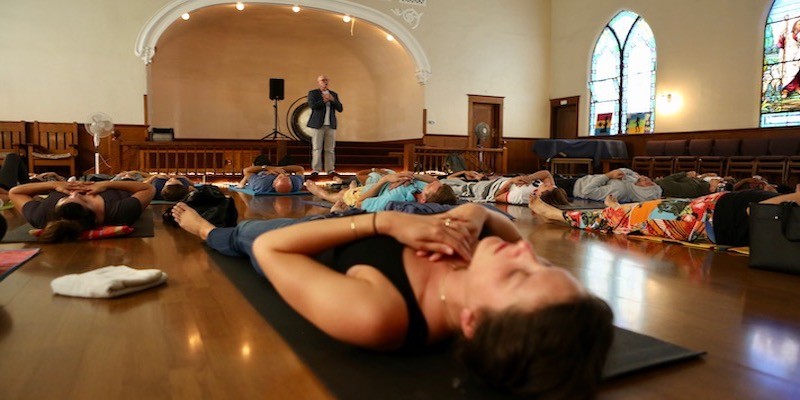What Are The Different Types of Breathwork?
Breathwork is an umbrella term. It’s like saying “fitness” there are so many types of fitness you have to be more specific. Like “I do crossfit.” People that do Kundalini yoga consider it “breathwork” and it’s quite different from what we are doing.
The type of breathwork I teach is “conscious connected breathing” or “circular breathing” It’s done in-and-out through the mouth, it starts with breathing through the mouth into the diagram, then into the chest, and then exhaling everything through the mouth. This is repeated without pausing at the top or the bottom like a continuous link.
There are lots of different styles and methods of this type of breathing and people come up with new titles, trademarks, and names for it every day only adding to the confusion. I could never list all of them, but here are five of the most popular ones and how I differ.
What are the different types of breathwork?
Holotropic Breathwork
Holotropic breathing Is probably the most popular style. There is tons of stuff on the internet about it. Here’s how I differ, Holotropic breathing is done longer and at a much faster pace than what I do (I don’t believe this is completely necessary to achieve the desired result) they also spend hours after sharing and doing Mandala art. It’s usually an all-day workshop. Although this may be fine for some. Most people don’t have this kind of time. My average breathwork class is about an hour long like that of a workout which people are most comfortable fitting into their already busy schedules. Holotropic breathwork certification often takes 600 hours and then you are not even guaranteed certification which makes no sense to me.
Shamanic Breathwork
The name alone is enough to keep away firefighters or housewives, which are the type of people I work with. These classes and sessions usually have drumming and tribal music. I prefer modern music in my breathwork as it’s more relatable and makes people feel safe. Shamanic breathwork certification has many levels including bodywork, Art, Music, Chakras all of which are fine but not really needed to lead a breathwork session.
Rebirthing Breathwork
One of the oldest and most recognized methods. They have dry and wet rebirthing. Wet is done in a pool or hot tub, sometimes completely nude for both the client and the guide. I believe this is uncomfortable for most people and again, not necessary to have a breakthrough. Also, the name is enough to turn your average person off. (Note: The creator of rebirthing believes in immortality and that it is part of the process.) As far as I know Rebirthing Certification takes several weeks.
Transformational Breathwork
Great name! it’s very accurate to what it is and that’s why the creator trademarked the name. Where I differ is that they use things like; Toning – making long sounds while doing breathwork or taping – basically a sort of temper tantrum slapping your hands and feet on the floor. Although I feel these may have some benefit, after trying them they felt a bit forced and contrived. I believe you don’t need all of these extras to get the full experience and benefit from breathwork. I’m a minimalist. Plus, there are so many levels and modules to get a Transformation breathwork Certification in that I have no idea how long it actually takes.
Wim Hof Method
Wim Hof is probably the most popular breathwork Teacher right now due to some of his insane feats like climbing Mt. Everest in shorts. Brrrr….no thanks. His breathing method is different from all the ones above and the one I teach because it incorporates breath holds and you usually just do 3 sets of 30 breaths instead of continuous connected breathing. I still thought I’d include it here because he’s so popular right now. I actually really appreciate all the attention he is bringing to breathwork. Wim Hof combines the Breathing with ice baths which I like but is very difficult to set that up for a class environment and even more difficult to get most people to do.
Where do all the breathwork techniques come from?
Look, anyone can teach some breathing and name it their own method, and even trademark it, but no one is really inventing anything new with breathing. All this stuff has been around for thousands of years from India. That said, there is plenty of room for everyone to teach the type of breathwork they connect with and help people.
My straight forward honesty may seem like I’m putting down these methods. I’m not. I’ve actually tried all of these and taken several of these teacher trainings and there is value to all of them. I found many of these methods antiquated and pretty unrealistic for myself and I realized I was not alone. That is why my style of breathwork is more stripped down and practical and I am pleased that so many people have resonated with my method.
My goal is to spread the amazing results of breathwork to as many people as possible. Which is why I not only offer Breathwork Teacher Training Courses in person but I also offer an Online Breathwork Teacher Training Course.




